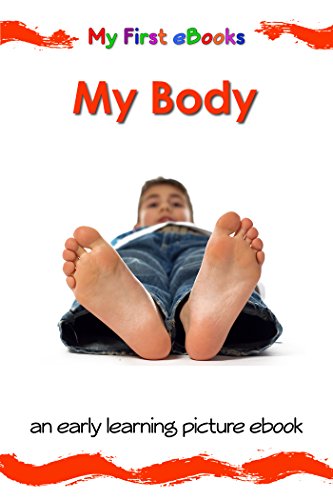-
Dot to Dot Animals
Karen Bryant-Mole
Paperback (Usborne Pub Ltd, Dec. 1, 2003)Book Details:Format: PaperbackPublication Date: 1/1/2004Pages: 24Reading Level: Age 4 and Up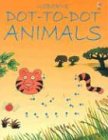 L
L
-
You're a Community Helper
Karen Bryant-Mole
Library Binding (Rigby Interactive Library, Nov. 1, 1997)Briefly describes workers who provide services to the community and shows children pretending to be a waiter, teacher, police officer, fire fighter, postal worker, nurse, veterinarian, doctor, dentist, and librarian.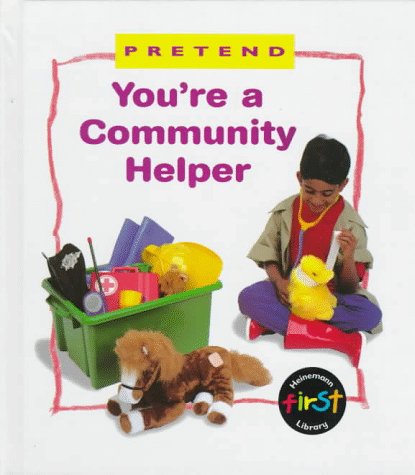 N
N
-
11 Times Table: learn multiplication facts in three simple stages
Karen Bryant-Mole
eBook (moon and balloon, May 29, 2015)The bright, attractive ebooks in this series help dispel the myth that multiplication tables are dull and boring. Their vibrant design and easy-to-follow steps are sure to appeal to children and encourage them to learn their times tables. Understanding multiplication and recalling multiplication facts are essential to a child’s success in mathematics. With their dual focus on both understanding and memorization, the ebooks in this series support the strategies and goals promoted in learning programs around the world, including the Common Core (US), the National Curriculum (UK) and the Australian Curriculum.Suitable for use both in school and at home, there is a different ebook for each multiplication table from the 2 times table through to the 12 times table. This ebook focuses on the 11 times table, which is taught in a simple three-stage progression:LookIn this first stage, multiplication is presented both numerically and visually. Seeing multiplication in a visual format helps children to understand the concept. Understanding accelerates the learning process and gives children the confidence to apply their learning when solving problems. LearnWhile rhymes, songs and games can all be helpful ways to start learning a times table, the goal is to be able to recall multiplication facts rapidly. The second stage, therefore, is to memorize the times table.RememberThe third stage is to embed the learning until recall becomes automatic. In this section, children can read the first part of the multiplication sentence, say the number they think completes the sentence, and then look at the next page to see if they are correct. Working at their own pace, they can practice until they are confident they have mastered this times table.
-
Fractions and Decimals
Karen Bryant-Mole
Paperback (Edc Pub, Jan. 1, 1995)Uses the experiences of the Og cave family to introduce fractions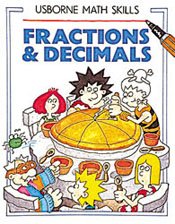 Q
Q
-
8 Times Table: learn multiplication facts in three simple stages
Karen Bryant-Mole
eBook (moon and balloon, May 29, 2015)The bright, attractive ebooks in this series help dispel the myth that multiplication tables are dull and boring. Their vibrant design and easy-to-follow steps are sure to appeal to children and encourage them to learn their times tables. Understanding multiplication and recalling multiplication facts are essential to a child’s success in mathematics. With their dual focus on both understanding and memorization, the ebooks in this series support the strategies and goals promoted in learning programs around the world, including the Common Core (US), the National Curriculum (UK) and the Australian Curriculum.Suitable for use both in school and at home, there is a different ebook for each multiplication table from the 2 times table through to the 12 times table. This ebook focuses on the 8 times table, which is taught in a simple three-stage progression:LookIn this first stage, multiplication is presented both numerically and visually. Seeing multiplication in a visual format helps children to understand the concept. Understanding accelerates the learning process and gives children the confidence to apply their learning when solving problems. LearnWhile rhymes, songs and games can all be helpful ways to start learning a times table, the goal is to be able to recall multiplication facts rapidly. The second stage, therefore, is to memorize the times table.RememberThe third stage is to embed the learning until recall becomes automatic. In this section, children can read the first part of the multiplication sentence, say the number they think completes the sentence, and then look at the next page to see if they are correct. Working at their own pace, they can practice until they are confident they have mastered this times table.
-
9 Times Table: learn multiplication facts in three simple stages
Karen Bryant-Mole
eBook (moon and balloon, May 29, 2015)The bright, attractive ebooks in this series help dispel the myth that multiplication tables are dull and boring. Their vibrant design and easy-to-follow steps are sure to appeal to children and encourage them to learn their times tables. Understanding multiplication and recalling multiplication facts are essential to a child’s success in mathematics. With their dual focus on both understanding and memorization, the ebooks in this series support the strategies and goals promoted in learning programs around the world, including the Common Core (US), the National Curriculum (UK) and the Australian Curriculum.Suitable for use both in school and at home, there is a different ebook for each multiplication table from the 2 times table through to the 12 times table. This ebook focuses on the 9 times table, which is taught in a simple three-stage progression:LookIn this first stage, multiplication is presented both numerically and visually. Seeing multiplication in a visual format helps children to understand the concept. Understanding accelerates the learning process and gives children the confidence to apply their learning when solving problems. LearnWhile rhymes, songs and games can all be helpful ways to start learning a times table, the goal is to be able to recall multiplication facts rapidly. The second stage, therefore, is to memorize the times table.RememberThe third stage is to embed the learning until recall becomes automatic. In this section, children can read the first part of the multiplication sentence, say the number they think completes the sentence, and then look at the next page to see if they are correct. Working at their own pace, they can practice until they are confident they have mastered this times table.
-
10 Times Table: learn multiplication facts in three simple stages
Karen Bryant-Mole
eBook (moon and balloon, May 29, 2015)The bright, attractive ebooks in this series help dispel the myth that multiplication tables are dull and boring. Their vibrant design and easy-to-follow steps are sure to appeal to children and encourage them to learn their times tables. Understanding multiplication and recalling multiplication facts are essential to a child’s success in mathematics. With their dual focus on both understanding and memorization, the ebooks in this series support the strategies and goals promoted in learning programs around the world, including the Common Core (US), the National Curriculum (UK) and the Australian Curriculum.Suitable for use both in school and at home, there is a different ebook for each multiplication table from the 2 times table through to the 12 times table. This ebook focuses on the 10 times table, which is taught in a simple three-stage progression:LookIn this first stage, multiplication is presented both numerically and visually. Seeing multiplication in a visual format helps children to understand the concept. Understanding accelerates the learning process and gives children the confidence to apply their learning when solving problems. LearnWhile rhymes, songs and games can all be helpful ways to start learning a times table, the goal is to be able to recall multiplication facts rapidly. The second stage, therefore, is to memorize the times table.RememberThe third stage is to embed the learning until recall becomes automatic. In this section, children can read the first part of the multiplication sentence, say the number they think completes the sentence, and then look at the next page to see if they are correct. Working at their own pace, they can practice until they are confident they have mastered this times table.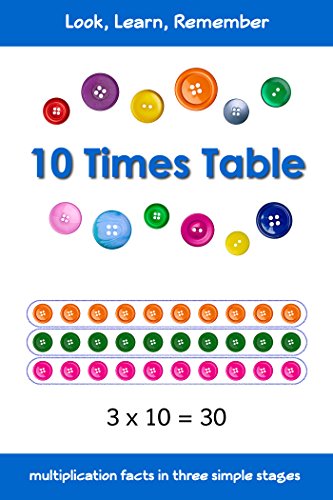
-
Numbers: an early learning counting ebook for babies, toddlers and young children
Karen Bryant-Mole
language (moon and balloon, Aug. 17, 2014)Beautiful photographs and large, clear print help young children learn to count and identify numerals 1 to 20.The books in this series promote essential early learning skills and help you give your child the best possible start. Early language and literacy skills are of particular importance. This book fosters these emergent skills through: Building VocabularyThere is a strong link between vocabulary and reading achievement. The titles in this series introduce children to a wide range of words and concepts. Children who have a rich and diverse vocabulary are better able to understand and use language effectively. They become good communicators and find it easier to make sense of the new words they encounter when they start to read independently. Developing Print AwarenessThe numerals are displayed in large, clear print, which focuses children’s attention on their shape and aids recall. Encourage your child to count the items on each page. Help them to understand that the last number in the count says how many there are altogether and that this number can be shown by a numeral. Later, introduce them to the idea that numbers can also be written in words. Encouraging an Enjoyment of BooksIt is important that children learn to associate books with pleasure. The greater a child’s enjoyment of books, the keener he or she will be to learn to read. The detailed, high-quality images capture children’s interest and encourage them to engage with the books. Success in learning to count and recognize the individual numerals will inspire a sense of achievement.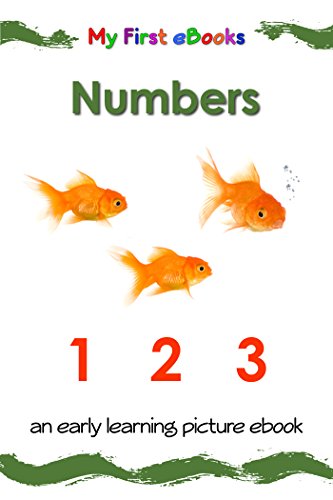
-
Wild Animals: an early learning picture ebook for babies, toddlers and young children
Karen Bryant-Mole
language (moon and balloon, Aug. 3, 2014)Fabulous photographs and a simple text help young children recognize and name lots of different wild animals. The first five years of a child’s life shape his or her future. The books in this series promote essential early learning skills and help you give your child the best possible start. Early language and literacy skills are of particular importance. The books in this series foster these emergent skills through: Building VocabularyThere is a strong link between vocabulary and reading achievement. The titles in this series introduce children to a wide range of words and concepts. Children who have a rich and diverse vocabulary are better able to understand and use language effectively. They become good communicators and find it easier to make sense of the new words they encounter when they start to read independently. Developing Print AwarenessThe crisp, clear page design makes it easy for children to distinguish between image and text. Hearing the simple text read aloud helps children understand that print has meaning. Later, they can be encouraged to ‘read’ the text themselves. They may only be repeating it from memory but they are learning that there is a direct relationship between printed words and spoken words. Encouraging an Enjoyment of BooksThe themes explored in this series reflect children’s fascination with the world around them, while the detailed, high-quality images capture their interest and invite them to engage with the books. It is important that children learn to associate books with pleasure. The greater a child’s enjoyment of books, the keener he or she will be to learn to read.
-
Dot-to-dot On The Seashore
Karen Bryant-Mole
Paperback (Usborne Pub Ltd, Dec. 30, 2003)Book Details:Format: PaperbackPublication Date: 12/1/2003Pages: 24Reading Level: Age 4 and Up L
L
-
4 Times Table: learn multiplication facts in three simple stages
Karen Bryant-Mole
eBook (moon and balloon, May 29, 2015)The bright, attractive ebooks in this series help dispel the myth that multiplication tables are dull and boring. Their vibrant design and easy-to-follow steps are sure to appeal to children and encourage them to learn their times tables. Understanding multiplication and recalling multiplication facts are essential to a child’s success in mathematics. With their dual focus on both understanding and memorization, the ebooks in this series support the strategies and goals promoted in learning programs around the world, including the Common Core (US), the National Curriculum (UK) and the Australian Curriculum.Suitable for use both in school and at home, there is a different ebook for each multiplication table from the 2 times table through to the 12 times table. This ebook focuses on the 4 times table, which is taught in a simple three-stage progression:LookIn this first stage, multiplication is presented both numerically and visually. Seeing multiplication in a visual format helps children to understand the concept. Understanding accelerates the learning process and gives children the confidence to apply their learning when solving problems. LearnWhile rhymes, songs and games can all be helpful ways to start learning a times table, the goal is to be able to recall multiplication facts rapidly. The second stage, therefore, is to memorize the times table.RememberThe third stage is to embed the learning until recall becomes automatic. In this section, children can read the first part of the multiplication sentence, say the number they think completes the sentence, and then look at the next page to see if they are correct. Working at their own pace, they can practice until they are confident they have mastered this times table.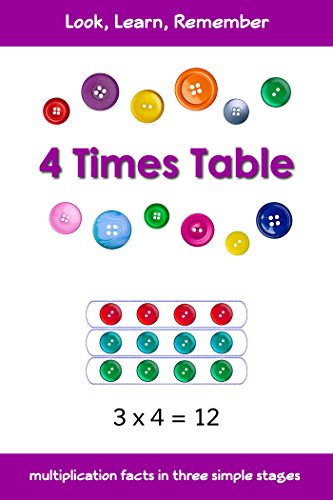
-
My Body: An early learning picture ebook for babies, toddlers and young children
Karen Bryant-Mole
eBook (moon and balloon, Aug. 5, 2014)Beautiful photographs and a simple text help young children learn to identify and name parts of the body, such 'eyes', 'head', 'shoulders' and 'toes'.The first five years of a child’s life shape his or her future. The books in this series promote essential early learning skills and help you give your child the best possible start. Early language and literacy skills are of particular importance. The books in this series foster these emergent skills through: Building VocabularyThere is a strong link between vocabulary and reading achievement. The titles in this series introduce children to a wide range of words and concepts. Children who have a rich and diverse vocabulary are better able to understand and use language effectively. They become good communicators and find it easier to make sense of the new words they encounter when they start to read independently. Developing Print AwarenessThe crisp, clear page design makes it easy for children to distinguish between image and text. Hearing the simple text read aloud helps children understand that print has meaning. Later, they can be encouraged to ‘read’ the text themselves. They may only be repeating it from memory but they are learning that there is a direct relationship between printed words and spoken words. Encouraging an Enjoyment of BooksThe themes explored in this series reflect children’s fascination with the world around them, while the detailed, high-quality images capture their interest and invite them to engage with the books. It is important that children learn to associate books with pleasure. The greater a child’s enjoyment of books, the keener he or she will be to learn to read.